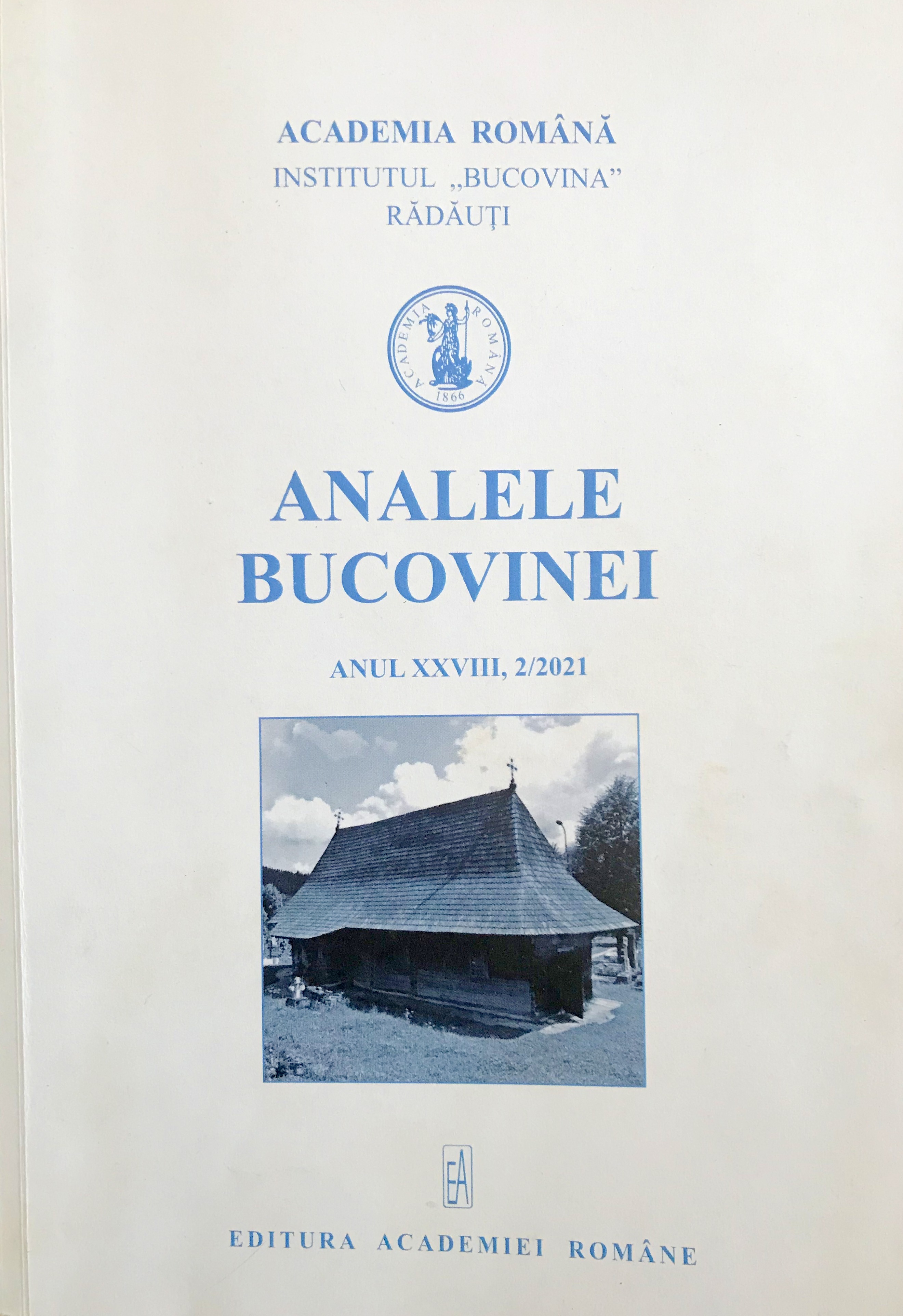MĂSURILE PREGĂTITOARE POLITICO-DIPLOMATICE ȘI MILITARPRO-PAGANDISTICE ALE U.R.S.S. PENTRU ANEXAREA
BASARABIEI ȘI A NORDULUI BUCOVINEI (I)
Political-Diplomatic and Military-Propaganda Preparatory Measures of the Soviet Leadership for the Accession of Bessarabia and the Northern Part of Bukovina to the U.S.S.R. (I)
Author(s): Serghei HakmanSubject(s): Politics / Political Sciences, History, Diplomatic history, Local History / Microhistory, Military history, Social history, WW II and following years (1940 - 1949)
Published by: Editura Academiei Române
Keywords: Bessarabia; Bukovina; Second World War; political-diplomatic measures; propaganda influence measures; incorporation;
Summary/Abstract: A significant turning point in relations between the Soviet Union and Romania was associated with the incorporation of Bessarabia and northern part of Bukovina into the USSR, which took place in the context of Soviet-German rapprochement. To this end, the Soviet leadership developed a set of preparatory political-diplomatic and military-propaganda measures. Soviet political and diplomatic actions were based on fundamental military preparations. In order to prepare and further joining Bessarabia and the northern part of Bukovina to the USSR, the Southern Front was created on the basis of the Kyiv Special and Odessa military districts. Army General Georgy Zhukov was appointed as a commander. The General Staff of the Red Army developed two variants of actions by Soviet troops. The first one provided for measures in case the Romanian government would not agree to the peaceful transfer of Bessarabia and Bukovina to the USSR. The second variant was an action plan in case of a voluntary retreat of Romanian troops west of the Prut. The first option was taken as the base. As early as June 26, 1940, on the border with Romania, the Soviet command concentrated 32 infantry, 2 motorized infantry, 6 cavalry divisions, 11 tank, 3 airborne brigades, 16 artillery regiments of the commander-in-chief’s reserve, 14 corps artillery regiments and 4 separate artillery divisions. In the main areas of the offensive, more than a triple advantage in manpower and means was provided. At the same time, for the purpose of ideological support, a huge propaganda apparatus was prepared to work with the population. In accordance with the Directive of the Main Political Directorate of the Red Army № 0140 (June 21, 1940), a large number of political workers were sent to the disposal of the Southern Front. One month before the start of the military operation, all employees of party and Soviet organizations were considered as mobilized. After appropriate training, they were ready for further activities as editorial staff, propagandists and agitators. Concert brigades and drama theatre groups were organized for the cultural service of the population. There were selected mobile library, gramophone records, and films. Book-mobile was arranged; everything necessary for the publication in Romanian newspaper was completed and provided with everything necessary. Due to the diligence of all these preparatory acts, the territories of Bessarabia and the northern part of Bukovina were occupied by the Red Army according to all the rules of military art (all elements of military operation were used: military force, local military pressure, military intelligence and counterintelligence, agitation and propaganda), thanks to which the USSR could reach its purpose.
Journal: ANALELE BUCOVINEI
- Issue Year: 57/2021
- Issue No: 2
- Page Range: 583-602
- Page Count: 20
- Language: Romanian

